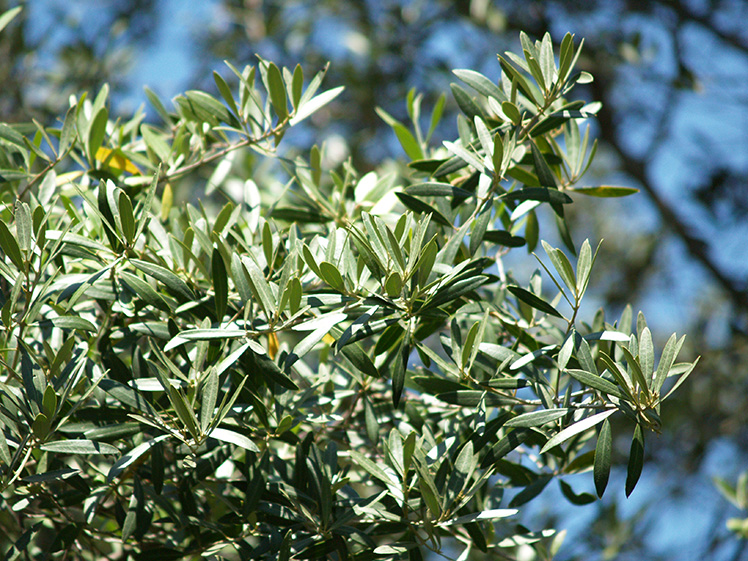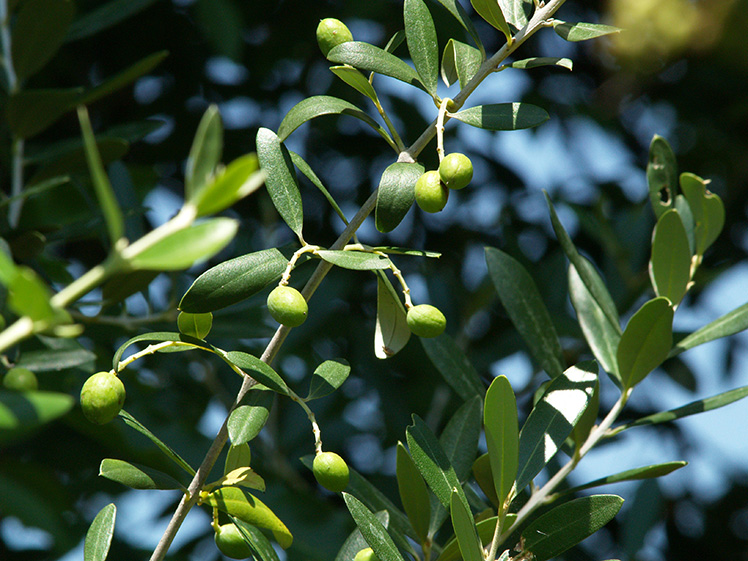
Wild Olive
Olea europaea var. sylvestris
Family and description
From the Oleaceae family, the wild olive is an evergreen shrub that can reach the height of a tree, about 10 m tall. The older ones have tortuous trunks, but not as rugged as the European olive, and the lower branches are prickly. The leaves are identical to those of the European olive tree but smaller in size.
Flowering occurs in May and June. The flowers are hermaphrodites, white, with four star-shaped petals and attached at the base, in small racemes, in the armpits of the leaves.
The fruits are small olives that ripen in the autumn, November – December.
Origin and habitat
It is an autochthonous species in Portugal. In the Iberian Peninsula, it is abundant throughout the Mediterranean zone, especially in the southern half. It is a species that lives on all types of soil, preferring basic soils. It occurs in places with good sun exposure, namely montado landscapes and dry shrub lands.
Uses and curiosities
The wood of the wild olive is used for burning and charcoal. Its fruits are appreciated by several species of animals. Its leaves have various medicinal properties.
These shrubs are of great longevity and several century-old individuals are known. The branches of olive trees were used in ancient times to decorate the winners of the Olympic Games.

